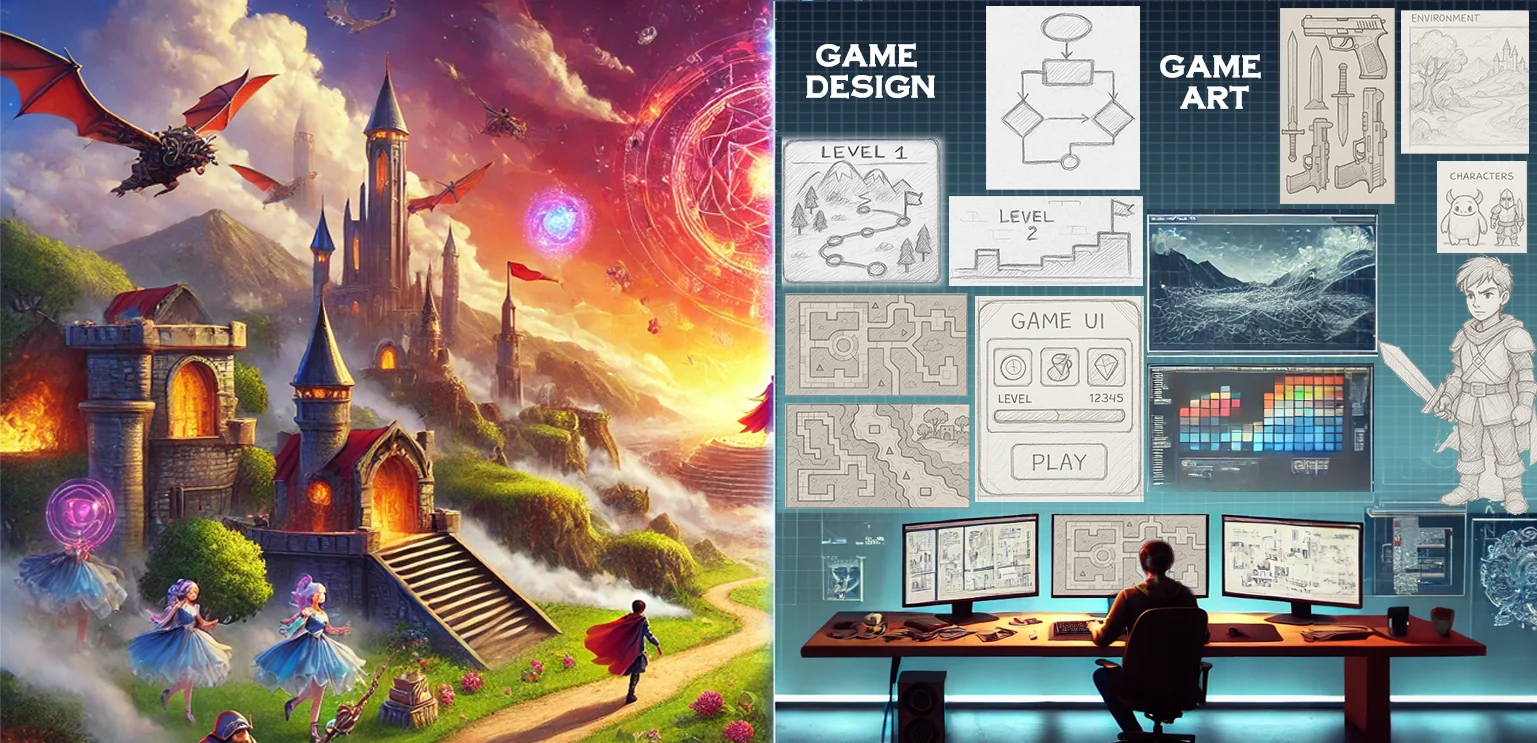Game Art vs. Game Design: What’s the Difference and Why Does It Matter?
Introduction
Game development is like building a world from scratch — and it takes both imagination and structure to do it right. Two of the most important parts of this process are game art and game design. Though these terms are sometimes mixed up, they play disparate roles in how a game looks, feels, and plays.

If you’re planning to create a game or outsource parts of it, understanding the difference between game art and game design can help you make smarter decisions.
What is Game Art?
Game art is all about what players see on screen. It includes the characters, environments, animations, effects, and even the game’s menus. In short, game artists are the ones who bring the visual world of a game to life.
Key Roles in Game Art
- Concept Artists – Sketch out early ideas for characters, settings, and objects.
- Character Artists – Create and build characters in both 2D and 3D, shaping how they look and feel in the game.
- Environment Artists – Build the game world — from landscapes to cityscape.
- Texture Artists – Add fine details to 3D models, making them look more realistic.
- Animators – Make characters and objects move naturally.
- UI/UX Artists – Design clear, user-friendly menus and game interfaces.
Why Game Art Matters
- Establishes the game's visual identity and atmosphere
- Makes the experience more immersive and engaging
- Makes your game unique and memorable in a competitive market
What is Game Design?
Game design is the foundation of any game. It outlines how the game functions — from its rules and goals to its levels and overall flow. Game designers focus on creating fun, balanced, and engaging experiences that keep players entertained and motivated to keep playing.
Key Roles in Game Design
- Game Designers – Develop the main gameplay systems, rules, and overall game structure.
- Level Designers – Design game levels that are exciting, balanced, and keep players engaged from start to finish.
- Narrative Designers – Write the story, characters, and dialogs.
- Gameplay Designers – Fine-tune the balance between difficulty, rewards, and fun.
- UX Designers – Ensure the game feels intuitive, user-friendly, and enjoyable to play.
Why Game Design Matters
- Defines how players interact with and experience the game
- Keeps players engaged and coming back
- Makes sure the game feels fair, fun, and intuitive
Game Art vs. Game Design: Key Differences
| Aspect | Game Art | Game Design |
|---|---|---|
| Focus | Visual elements such as characters, environments, and animations | Gameplay mechanics, structure, and how players interact with the game |
| Responsibility | Creating visuals, animations, and UI | Designing gameplay, levels, and systems |
| Tools Used | Photoshop, Blender, Maya, ZBrush | Unity, Unreal Engine, GameMaker |
| End Result | Stunning visuals and a unique art style | Fun, balanced gameplay and clear progression |
Bringing It All Together: Game Art and Game Design in Sync
Even though game art and game design are different, they go hand in hand. A great game needs both a strong structure and amazing visuals. Game designers create the framework, while game artists make that world feel real and exciting. The best games are the result of close collaboration between both teams.
Why Gamix Labs is the Perfect Partner for Your Game Art Needs
At Gamix Labs, we specialize in game art outsourcing — from detailed 2D illustrations to full 3D character modeling and animation. Whether you’re building a casual mobile game or a large-scale fantasy world, we bring your ideas to life with high-quality visual assets.
While our expertise lies in game art, we recognize the crucial role of game design. That's why we collaborate closely with developers and designers to ensure your game not only looks fantastic but also offers a seamless and engaging experience.